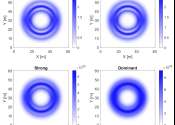Scientists use generative AI to answer complex questions in physics
When water freezes, it transitions from a liquid phase to a solid phase, resulting in a drastic change in properties like density and volume. Phase transitions in water are so common most of us probably don't even think about ...









